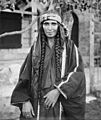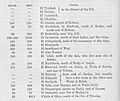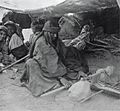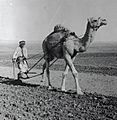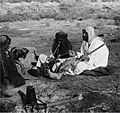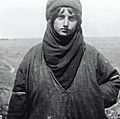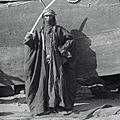Bedouin facts for kids
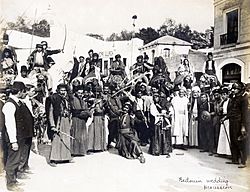
Bedouin wedding procession in the Jerusalem section of the Pike at the 1904 World's Fair
|
|
Quick facts for kids Total population |
|
|---|---|
| 4,000,000–25,000,000 | |
| Regions with significant populations | |
| 1,800,000 | |
| 635,000 (1978) | |
| 380,000 (2007) | |
| 50,000 (2003)–380,000 (2007) | |
| 250,000 (2012) | |
| 230,000 | |
| 100,000 | |
| 30,000 | |
| Languages | |
| Arabic dialects (Bedawi • Hassāniyya • Bedouin Hejazi • Bedouin Najdi • Omani) | |
| Religion | |
| Predominantly Islam Minority Christianity |
|
| Related ethnic groups | |
| other Arabs | |
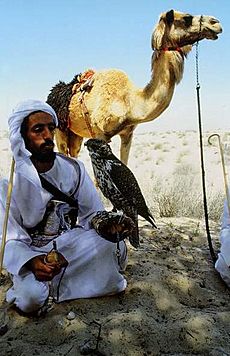
Bedouins are an Arab ethnocultural group. They are descended from nomads who lived in the Arabian, Syrian and Saharan Deserts.
They call themselves the people of the tent, because they travelled around, living in tents. Bedouin were camel raisers and drivers, sheep and goat nomads, cattle driving nomads, and merchants.
While many Bedouins have abandoned their nomadic and tribal traditions for a modern urban lifestyle, many retain traditional Bedouin culture such as retaining the traditional ʿašāʾir clan structure, traditional music, poetry, dances (such as saas), and many other cultural practices and concepts. Urbanized Bedouins often organise cultural festivals, usually held several times a year, in which they gather with other Bedouins to partake in and learn about various Bedouin traditions—from poetry recitation and traditional sword dances to playing traditional instruments and even classes teaching traditional tent knitting. Traditions like camel riding and camping in the deserts are still popular leisure activities for urban Bedouins who live in close proximity to deserts or other wilderness areas.
Traditions
Herding
Livestock and herding, principally of goats, sheep and dromedary camels comprised the traditional livelihoods of Bedouins. These were used for meat, dairy products, and wool. Most of the staple foods that made up the Bedouins' diet were dairy products.
Camels, in particular, had numerous cultural and functional uses. Having been regarded as a "gift from God", they were the main food source and method of transportation for many Bedouins. In addition to their extraordinary milking potentials under harsh desert conditions, their meat was occasionally consumed by Bedouins. As a cultural tradition, camel races were organized during celebratory occasions, such as weddings or religious festivals.
Some Bedouin societies live in arid regions. In areas where rainfall is very unpredictable, a camp will be moved irregularly, depending on the availability of green pasture. Where winter rainfall is more predictable in regions further south, some Bedouin people plant grain along their migration routes. This proves a resource for the livestock throughout the winter. In regions such as western Africa, where there is more predictable rainfall, the Bedouin practice transhumance. They plant crops near permanent homes in the valleys where there is more rain and move their livestock to the highland pastures.
Oral poetry
Oral poetry was the most popular art form among Bedouins. Having a poet in one's tribe was highly regarded in society. In addition to serving as a form of art, poetry was used as a means of conveying information and social control.
Raiding or ghazw
The well-regulated traditional habit of Bedouin tribes of raiding other tribes, caravans, or settlements is known in Arabic as ghazw.
Related pages
Images for kids
-
Bedouins in Sinai, 1967
-
Arab Christian Bedouin woman from the settled town of Kerak, Jordan, who probably was the wife of a sheikh. Braids were predominantly worn by Arab Christian Bedouin women of the tribes of Jordan.
-
Bedouin man in Riyadh, 1964.
-
Bedouins making bread in Egypt.
-
Bedouin shepherd in Syrian Desert
-
Galilee 1911
-
Bedouin woman, Beit She'an 1920
See also
 In Spanish: Beduinos para niños
In Spanish: Beduinos para niños






